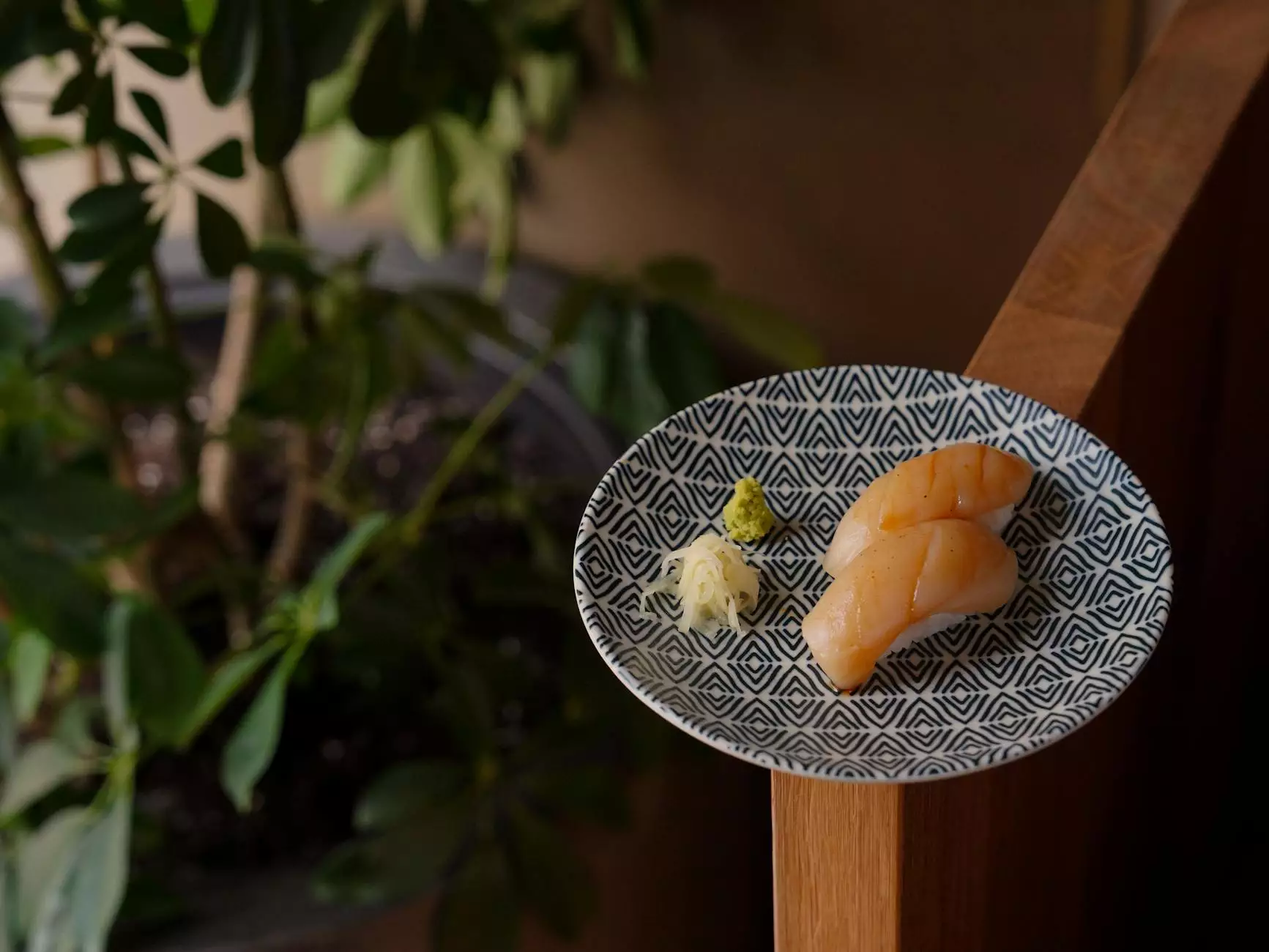The Richness of Traditional Wasabi in Japanese Cuisine

Understanding Traditional Wasabi
Traditional wasabi, often mistaken for its assertive cousin, horseradish, is a vital ingredient in the world of Japanese cuisine. Unlike the common green paste found in many sushi bars, true wasabi - or Wasabia japonica - is a plant native to Japan, known for its unique flavor profile and health benefits. The process of cultivating and preparing traditional wasabi is an art that requires dedication and an understanding of the plant's delicate nature.
The Cultivation of Traditional Wasabi
Cultivating traditional wasabi is a meticulous task, requiring specific environmental conditions. This plant thrives in rocky riverbeds with cold, flowing water, which ensures its roots remain moist and cool. The ideal settings for farming wasabi include:
- Pure, oxygen-rich water.
- Shaded areas to prevent overheating.
- Rich, organic soil to promote healthy growth.
Given these requirements, growing traditional wasabi is no easy feat, and only a handful of farms in Japan cultivate this prized plant. This rarity adds to its value and status in culinary circles.
The Flavor Profile of Traditional Wasabi
The complex flavor of traditional wasabi distinguishes it from the typical horseradish paste. When freshly grated, it exudes a vibrant, pungent aroma that can invigorate any dish. The flavor is described as:
- Fresh - Bright and clean, offering a crisp sensation to the palate.
- Spicy - Unlike the heat from chili peppers, wasabi’s spiciness is ephemeral, providing a sharp burst that dissipates quickly.
- Umami-rich - Enhancing the flavors of the food it accompanies, creating a harmonious balance on the palate.
This unique flavor profile makes traditional wasabi an essential condiment for sushi and sashimi, enhancing the natural taste of the fish without overpowering it.
The Culinary Uses of Traditional Wasabi
In Japanese cuisine, traditional wasabi is traditionally served with sushi and sashimi. It can be:
- Mixed with soy sauce for dipping.
- Spread on top of sushi for an extra layer of flavor.
- Incorporated into marinades or dressings.
- Garnished on top of various dishes to enhance presentation and flavor.
Its versatility extends beyond sushi, as chefs experiment with wasabi-infused sauces, dressings, and even desserts, proving its adaptability in various culinary contexts.
The Health Benefits of Traditional Wasabi
Apart from its culinary applications, traditional wasabi offers numerous health benefits. Its natural compounds are known for:
- Anti-inflammatory properties - Helping reduce the risk of chronic diseases.
- Antioxidant benefits - Protecting the body from oxidative stress.
- Promoting digestion - Containing compounds that support gut health.
- Boosting the immune system - With antimicrobial properties effective against certain pathogens.
Incorporating traditional wasabi into your diet not only enhances meals but also supports overall health.
Why Traditional Wasabi Matters in Today's Culinary Scene
As diners become more discerning, the demand for authentic ingredients rises. Traditional wasabi has carved its niche, appreciated for not just its taste, but the story behind its cultivation. Restaurants and sushi bars that emphasize the use of genuine wasabi are often hailed for their commitment to authenticity.
Establishments like Real Wasabi showcase the importance of using traditional wasabi, garnering attention from food enthusiasts and critics alike. Such businesses offer not just meals but an educational experience about the richness of Japanese culinary traditions and the integral role that traditional wasabi plays in these practices.
The Experience of Dining with Traditional Wasabi
When visiting a sushi bar or restaurant that serves traditional wasabi, diners can expect a unique culinary journey. Chefs often freshly grate the wasabi root, allowing patrons to experience the bold flavors and aromas at their peak. This attention to detail creates:
- A deeper appreciation for the ingredient.
- An immersive dining experience that connects diners to Japanese culture.
- A greater understanding of the craftsmanship involved in sushi preparation.
The integration of traditional wasabi into dishes is not merely about flavor; it’s about delivering an authentic Japanese dining experience that resonates with history, tradition, and respect for the ingredients.
The Future of Traditional Wasabi in Global Cuisine
With the global food landscape constantly evolving, the visibility of traditional wasabi is on the rise. Chefs around the world are recognizing its unique qualities and experimenting with it in various cuisines. This could potentially lead to more fusion dishes that marry wasabi's spiciness with flavors from around the globe.
Future trends may include:
- Greater accessibility - As more farms begin to cultivate traditional wasabi outside of Japan, fresh wasabi will become more available worldwide.
- Innovation in food pairing - Chefs experimenting with wasabi in unexpected dishes and profiles, such as desserts and non-Japanese cuisine.
- Education about wasabi - As culinary schools and chefs highlight authentic ingredients, diners will learn more about the significance and preparation of traditional wasabi, leading to heightened appreciation and demand.
As awareness grows, traditional wasabi is poised to become a staple not just in Japanese cuisine but in global culinary practices.
Conclusion: Embracing Traditional Wasabi
In conclusion, traditional wasabi plays an essential role in Japanese culinary culture. Its complex flavor, health benefits, and the care involved in its cultivation make it a remarkable ingredient. As a growing number of sushi bars and restaurants adopt its use, diners are not only treated to exquisite flavors but are also invited to engage with the rich history surrounding this unique root.
The experience of enjoying traditional wasabi, whether at a high-end restaurant or your local sushi bar, is a journey that connects you to the heart of Japanese tradition and the artistry behind great cuisine. Let’s celebrate and continue to explore the delicious and vibrant world of traditional wasabi.









